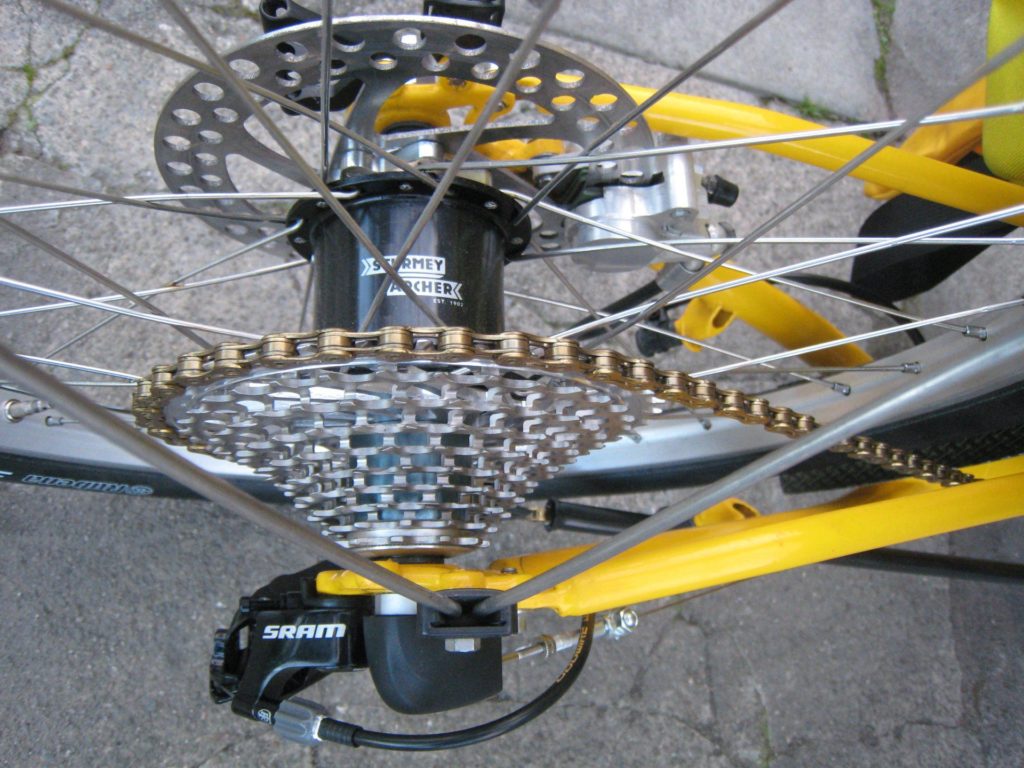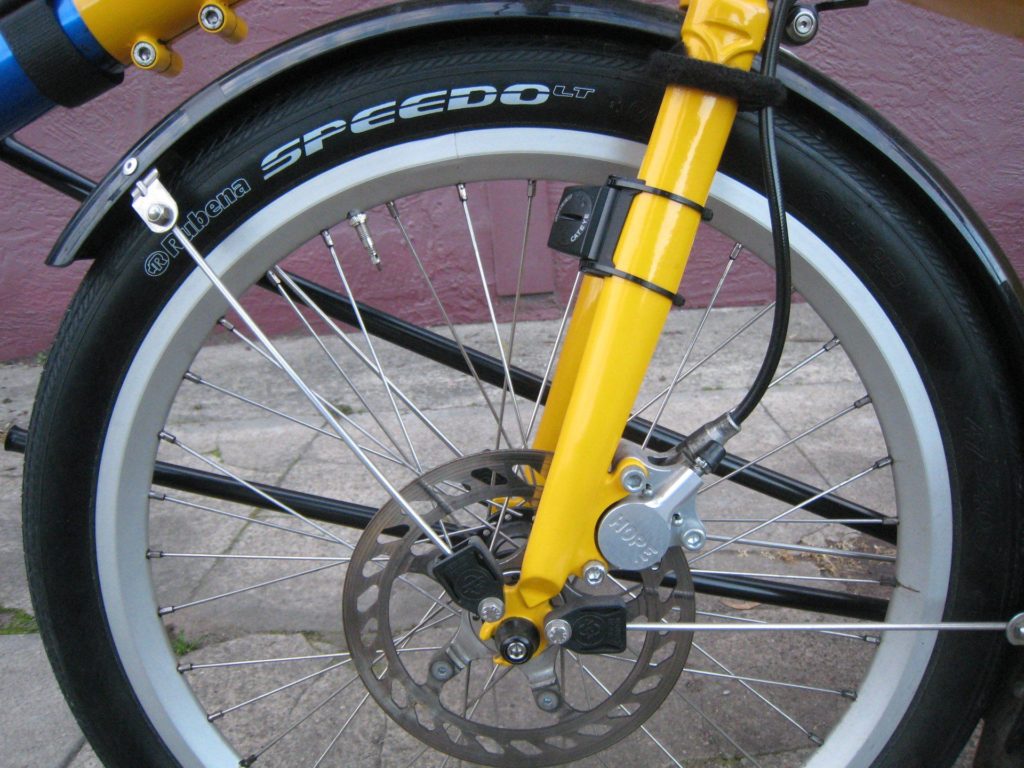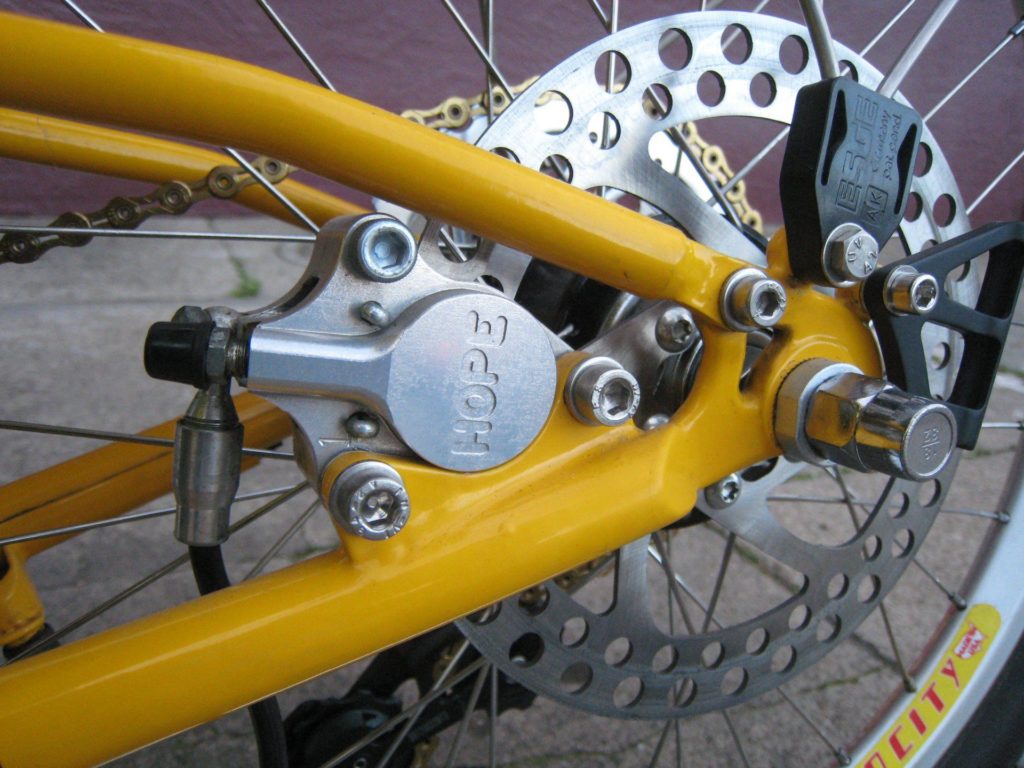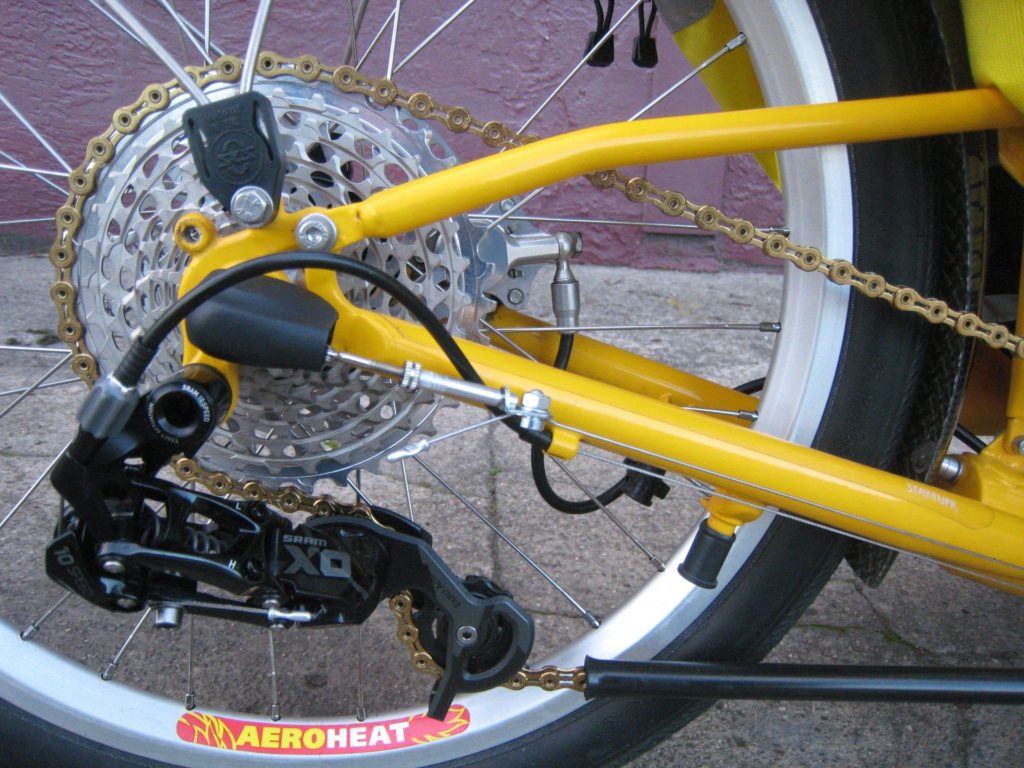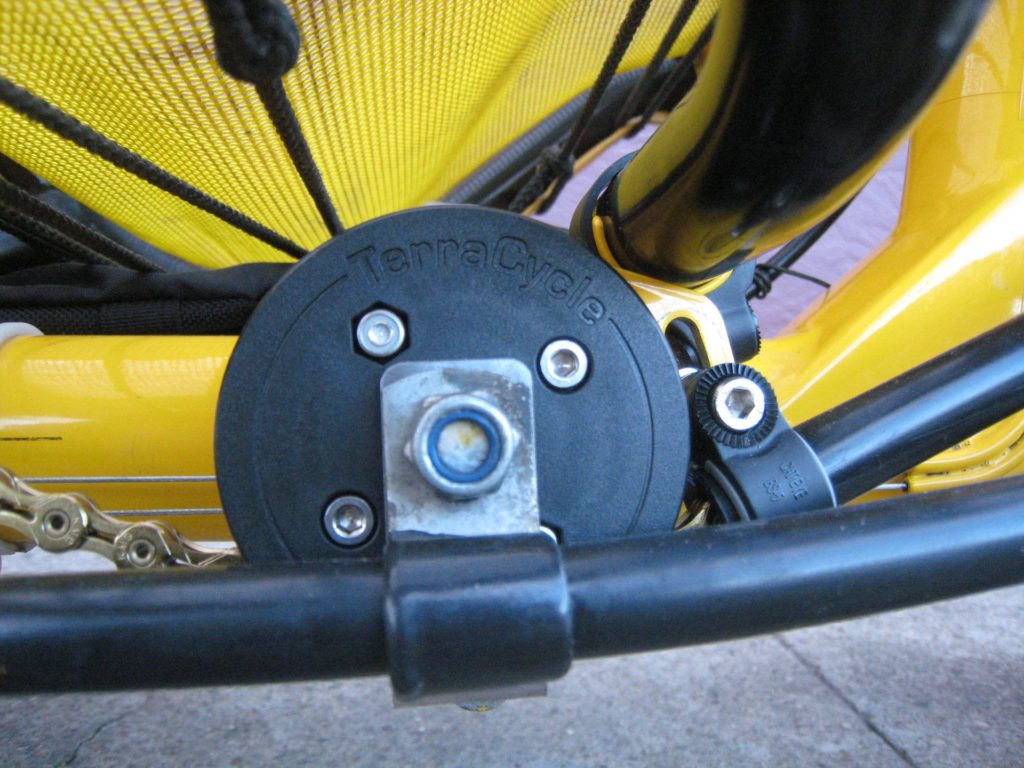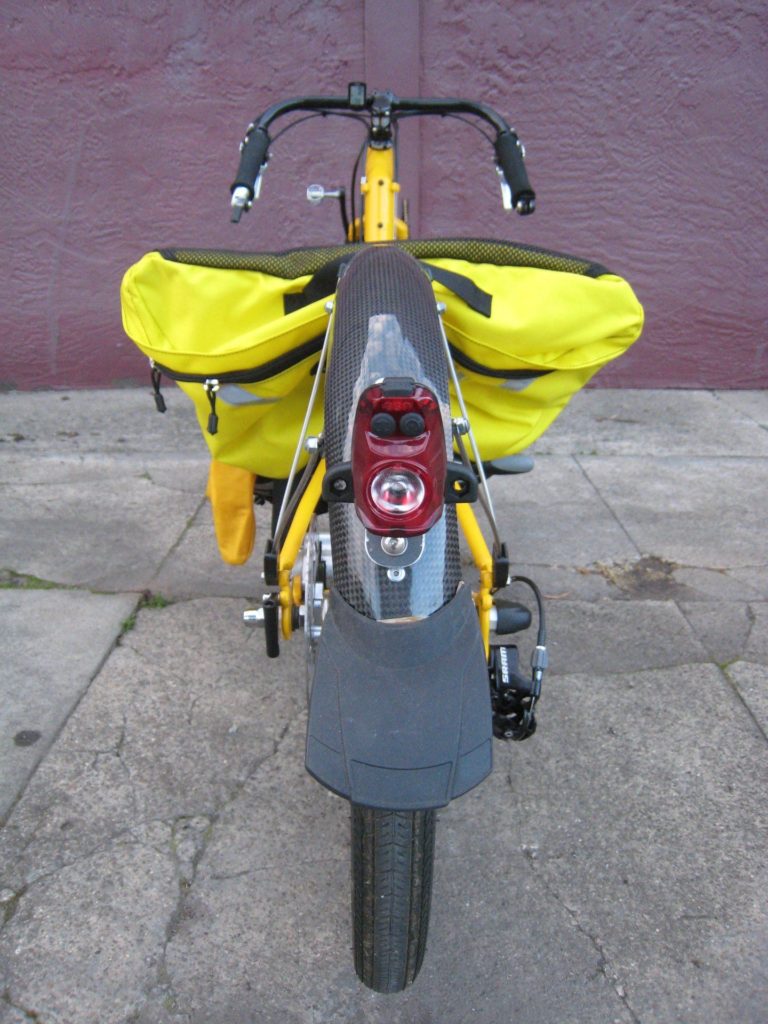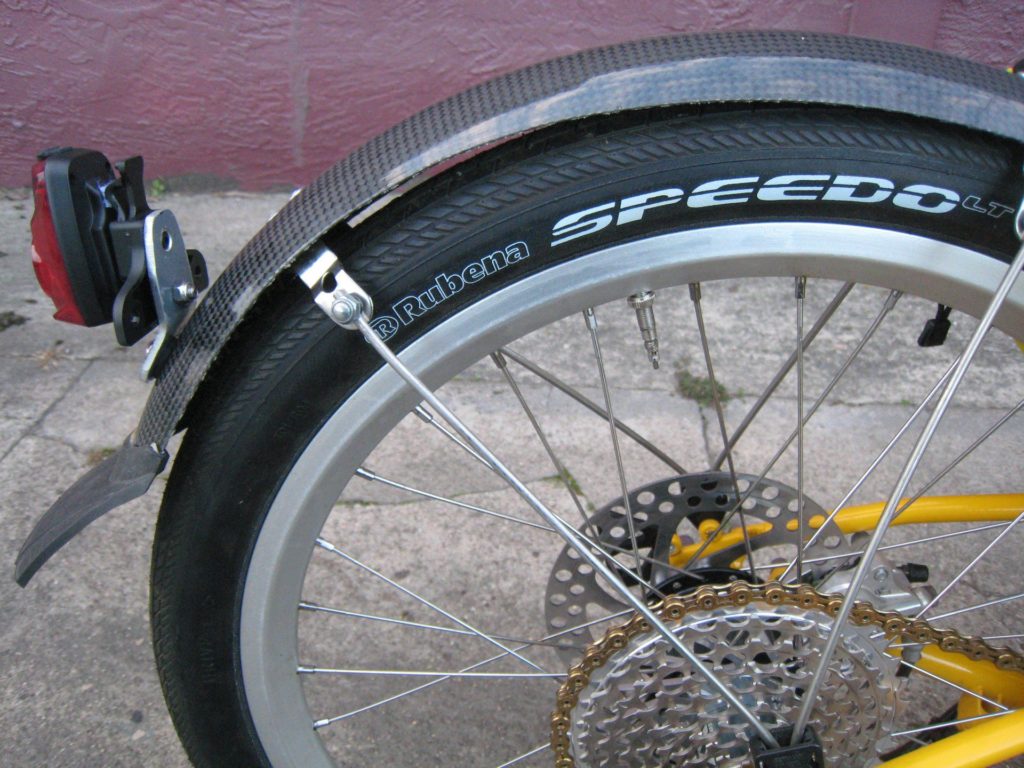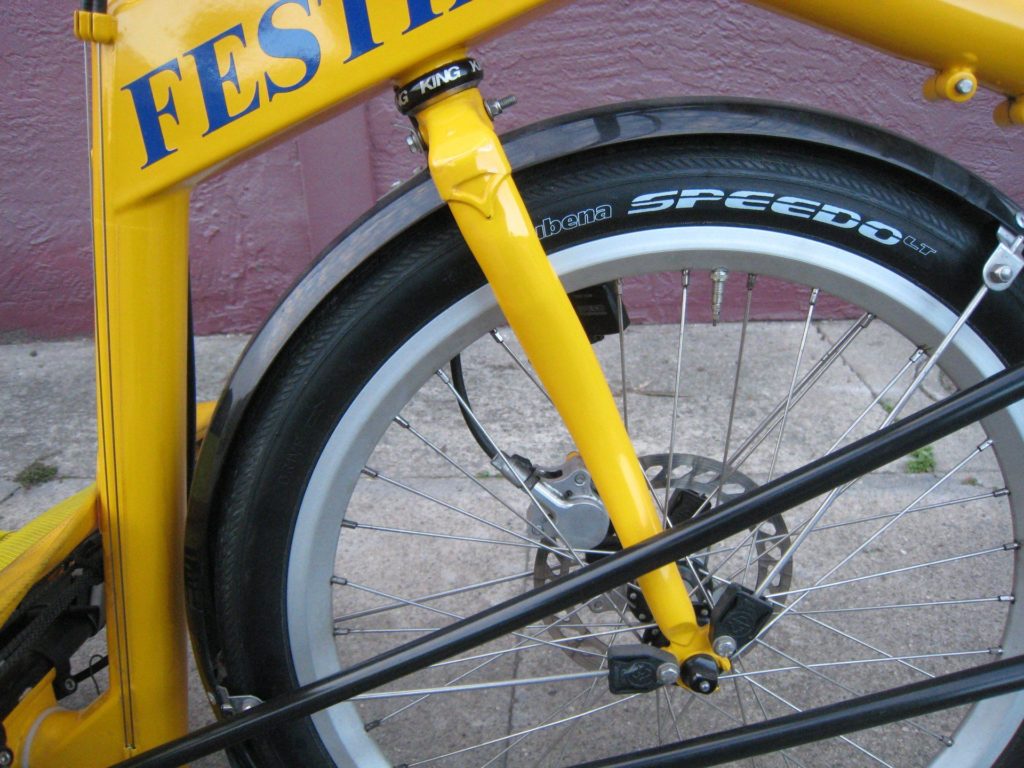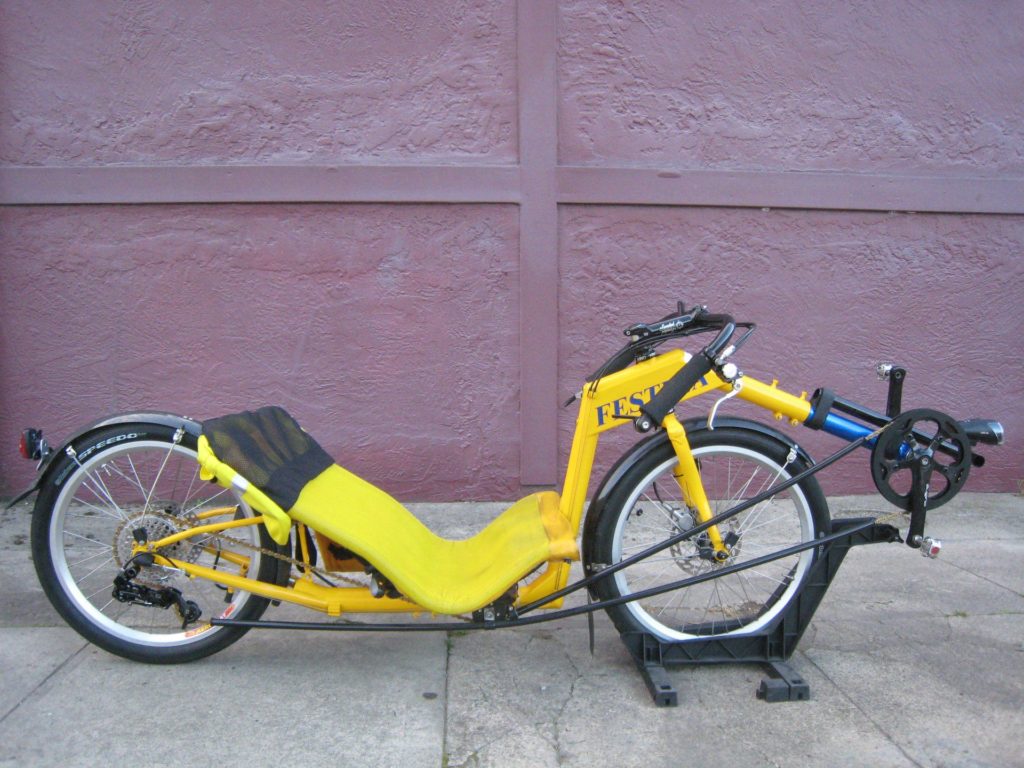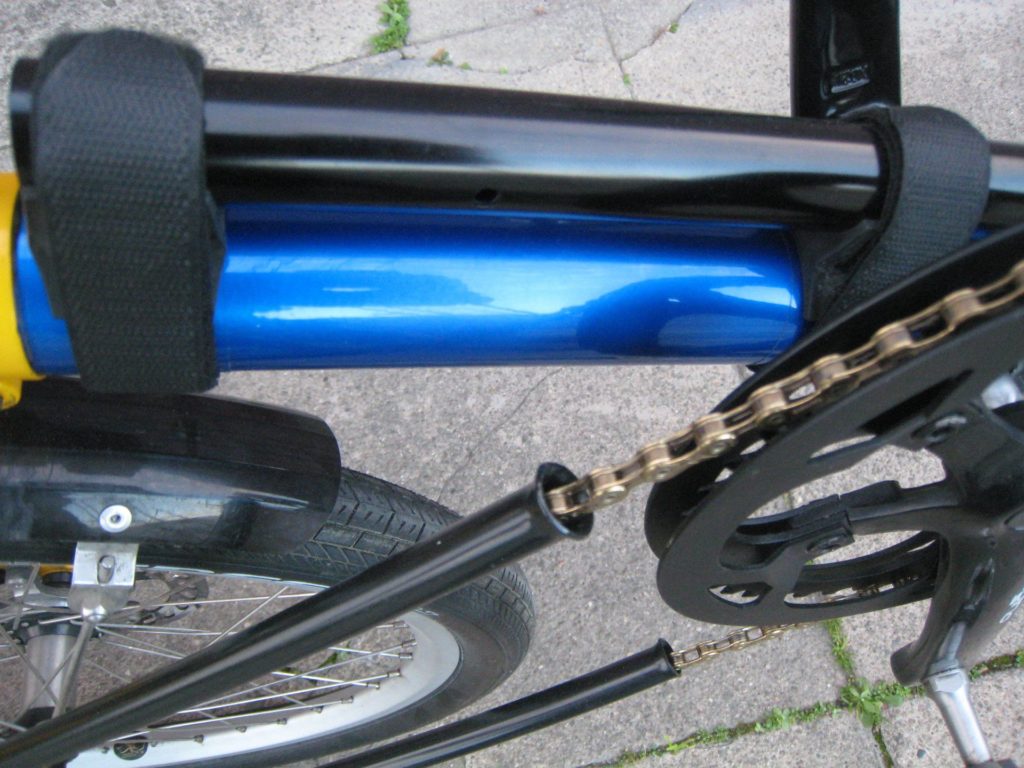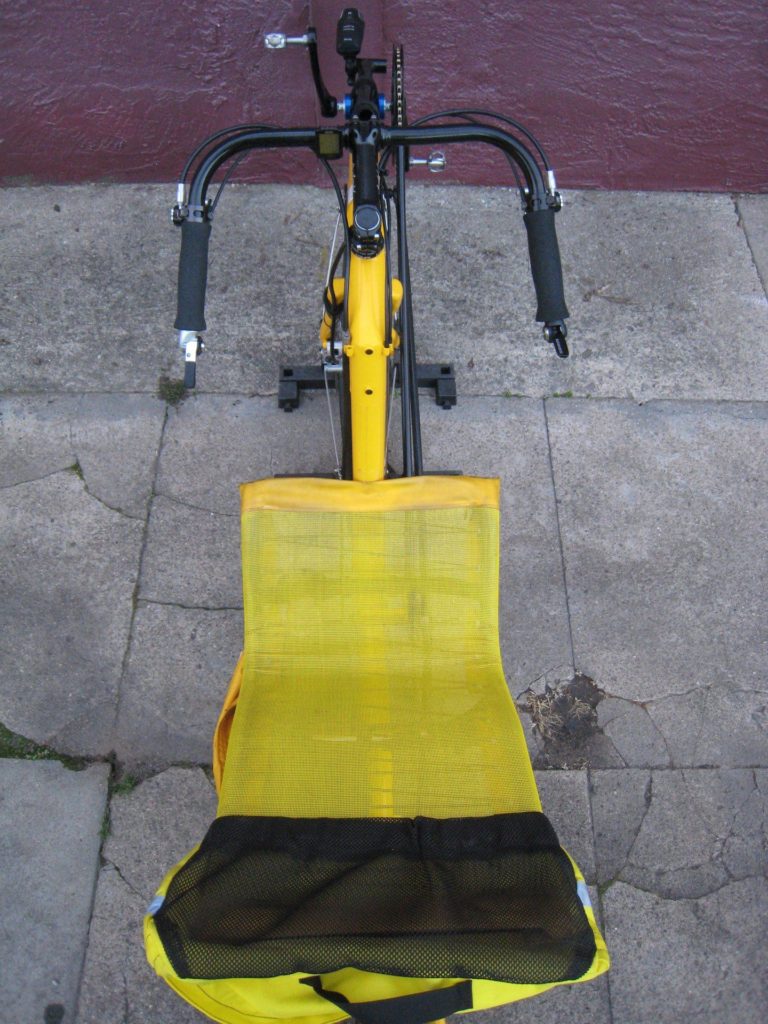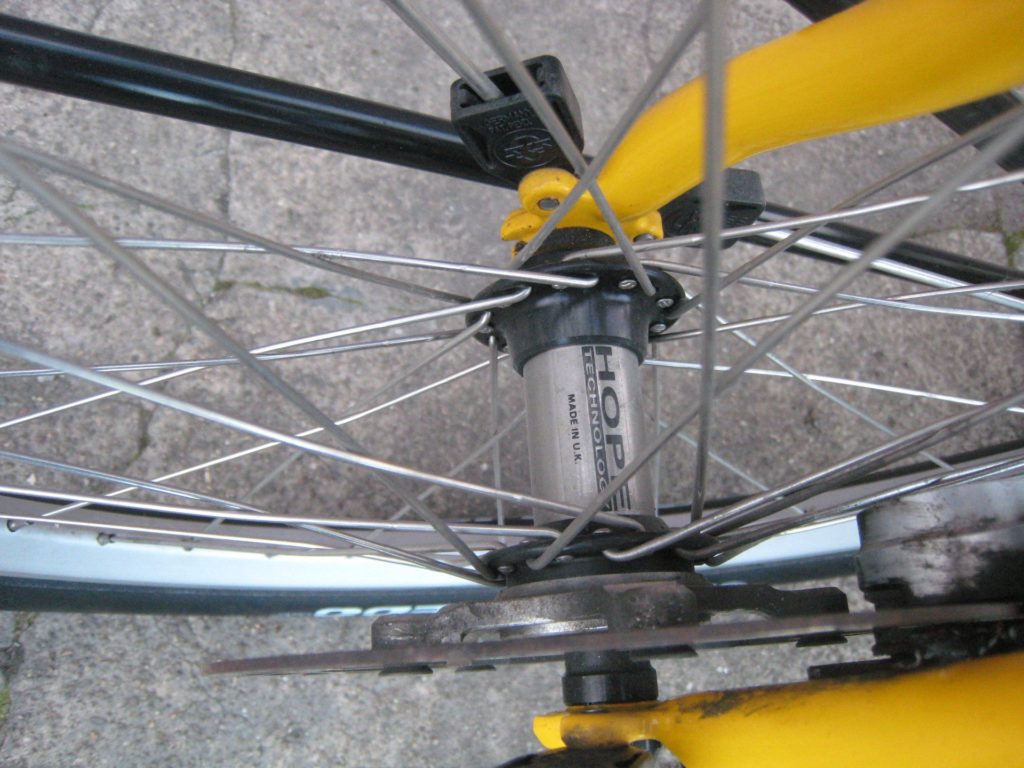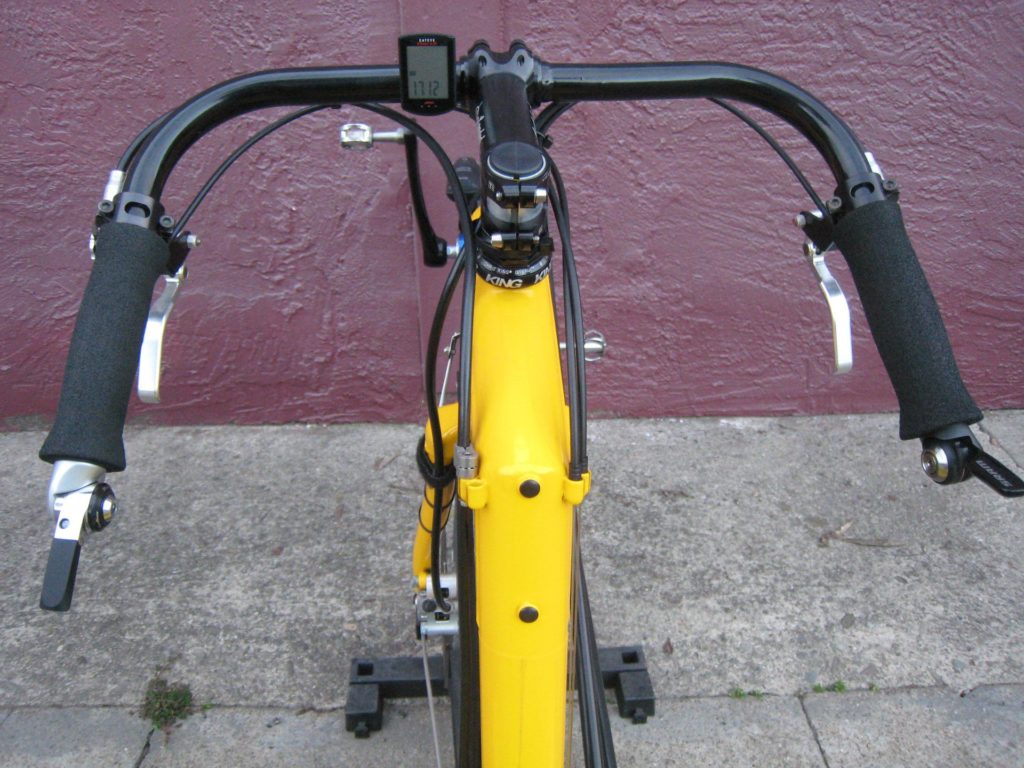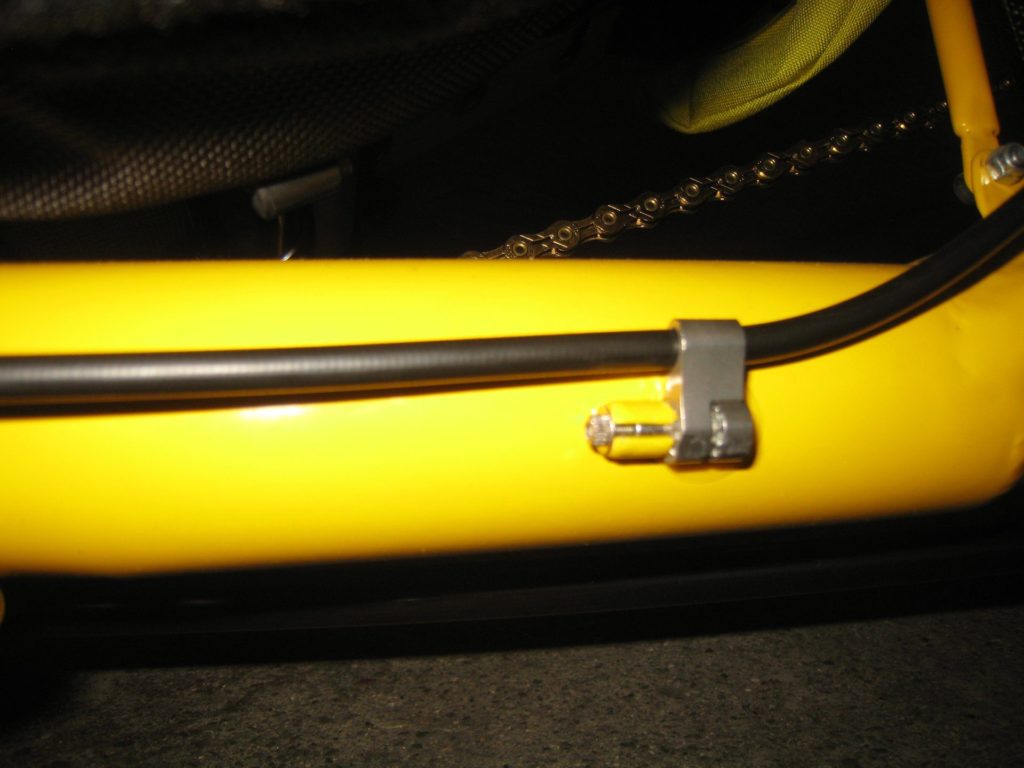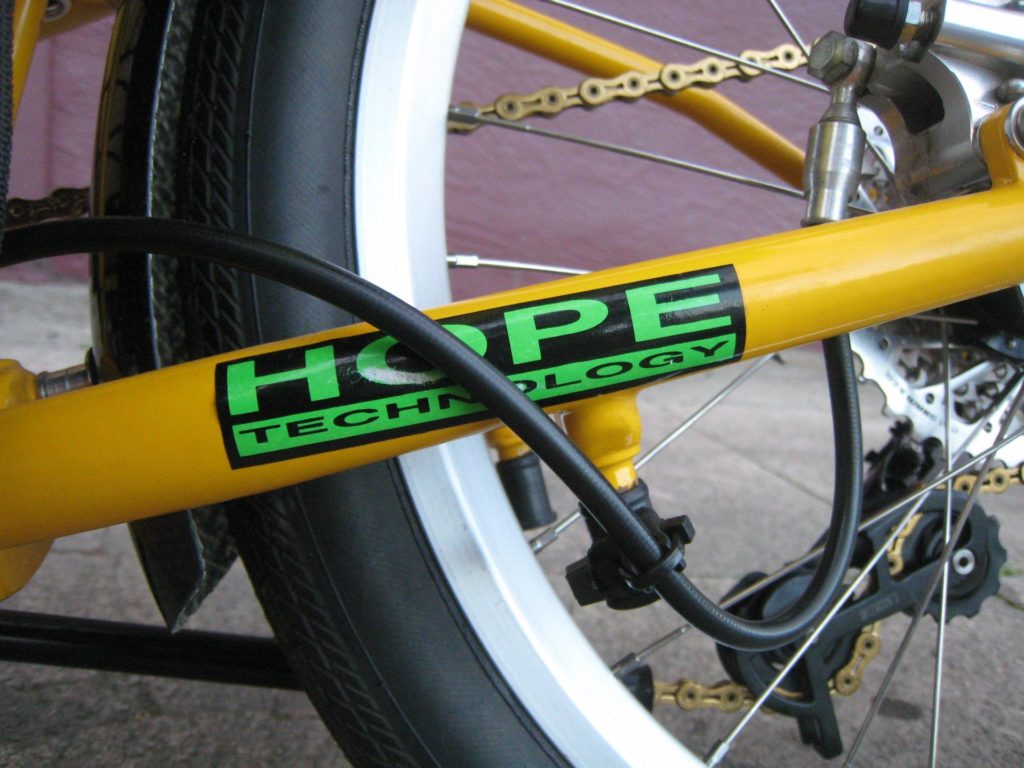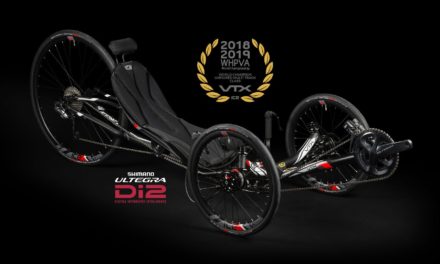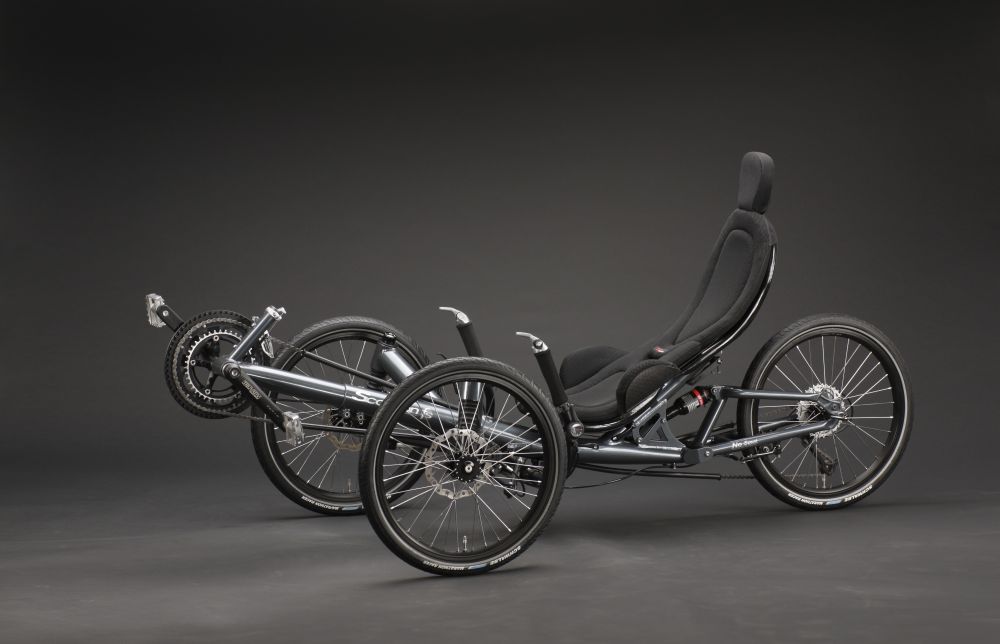One of my projects this winter has been restoring my 1999 Crystal Engineering Festina. It is nearly 20 years old as I acquired it in June 1999. It was designed and sold by Peter Ross with the frame being brazed under contract by Chris Parker in the early days of Inspired Cycle Engineering when it shared the same facility as Crystal Engineering in Falmouth, Cornwall, UK. There are some similarities with the ICE trikes of the same vintage such as the seat and telescoping frame. My first long ride on this bike was the Cannonball in June 1999. This was a timed ride between Seattle and Spokane, Washington on I-90. In August 1999 I rode it on the Marin Century and then took it to Zurich, Switzerland where I toured pulling a B.O.B. trailer to Interlaken where I participated in the World HPV Championships. After that I got a ride to France where I completed Paris-Brest-Paris on the Festina. After somewhat recovering from that I rented a car and drove to Friedrichshafen, Germany to attend the Eurobike show. I then spent several days touring with the B.O.B. trailer behind the Festina and rode to Munich Airport where I packed everything up and flew to Las Vegas, Nevada for the Interbike show. I unpacked the Festina at the airport in Las Vegas and rode to the hotel in heavy traffic at night. From Interbike I carpooled back to Northern California. I was away for about a month on that trip. It was nice back then being less busy and being able to take off on long holidays.
Other organised rides I took the Festina on included the Konocti Challenge Century in October 1999, the Death Valley Double Century in February 2000, the Solvang Double Century in March 2000, and the Davis Double Century in May 2000. Then I pretty much stopped riding it though did some shorter rides on it in 2003. The Festina has been sitting collecting dust and had some worn out or non-optimal parts on it so I decided to restore it. Now that I have finished restoring it the only parts that remain original are the frame, fork, seat, handlebar, Chris King headset, Hope Technology C2 hydraulic disc brake system, front wheel with Hope hub and Velocity Aeroheat rim, and SKS 180 degree coverage front mudguard.
For the upgrades I used a combination of surplus parts I had around and new parts I ordered. Most of the changes I made involved the drivetrain. I never liked the Schlumpf Mountain Drive it was equipped with primarily because it seemed very inefficient when the reduction gearing was engaged and the high chain tension from the virtual small chainring it created caused lots of boom flex. I also don’t like having to momentarily stop pedalling to click the shift buttons with my heels and don’t like the 250% jump between under-drive and direct drive. So I replaced the Schlumpf Mountain Drive with the Sugino XD2 152 mm crankset with single 46-tooth chainring and double guard rings that came on my first HP Velotechnik Grasshopper fx in 2009. To continue to have wide range gearing I replaced the original rear wheel with one with a Sturmey-Archer CS-RK3 3-speed internally geared hub that takes an 8 to 10-speed cassette.
The new rear rim is also a silver Velocity Aeroheat to match the front but is 32-hole rather than 36. I would have originally used 32-hole rims but in mid-1999 Velocity only offered the 406 mm version of the Aeroheat with 36-holes. As the original Hope brake rotors have a proprietary splined attachment system, I had to replace the rear rotor with a Hope International Standard 6-bolt rotor. I had to get this rotor directly from Hope as it needed to be the rare 155 mm diameter rather than the common 160 mm diameter. The brakes also needed bleeding. I replaced the worn out Shimano 9-speed chain with a KMC X10SL hollow pin chain with gold Ti Nitride coating. I replaced the Shimano XTR 11-34 9-Speed cassette with a SRAM XX 11-36 10-speed cassette. I replaced the Shimano XTR short cage rear derailer with a SRAM XO short cage rear derailer. I replaced the right Shimano Dura-Ace 9-speed bar-end shifter with a SRAM TT-500 10-speed bar-end shifter. On the left side I added a SunRace 3-speed indexed bar-end shifter to shift the internal gearing of the Sturmey-Archer hub. I replaced all the shift cables and housings and improved the rear hydraulic line routing using Jagwire stainless steel Cable Grips in place of cable-ties.
I always thought the grey plastic chain tubes which came on the Festina were ugly and not as low friction as other chain tubes. While they still had plenty of life left in them, I took this opportunity to replace them with black chain tubes from HP Velotechnik. I also replaced the rubber coated metal P-clip anchoring the upper chain tube with a lighter and cleaner looking CatEye BB-5 plastic clamp. The stock chain idler was worn out so I replaced it with a TerraCycle Sport Power that came off a new Catrike I had upgraded to a TerraCycle Elite Power idler.
I never liked the shiny silver stem that originally came on the Festina and wished it had slightly longer reach. So I replaced the stem with a black anodised Loaded Precision 120 mm reach stem. The 20 year old Polar cyclecomputer which displayed cadence and heart rate was long gone. I wanted just a simple computer to show speed and distance information so installed the lightest, lowest profile wireless cyclecomputer I know of, a CatEye Strada Slim. The headlights were originally mounted on the handlebar which isn’t a very good place for them as it creates foot flash. Also road hazards are better seen if the headlight is lower in relation to the rider’s eyes. Since there is no front derailer tube there was no easy place to mount a headlight in front of the bottom bracket and I didn’t want to drill a hole in the bottom bracket shell. I remembered I had an old RANS headlight mount which was originally intended to bolt to bottle cage fittings under the boom of RANS SWB bikes. The extension tube on the RANS headlight mount is extremely long but being thin walled aluminium it is still fairly light. The bottle cage fittings on the top of the Festina boom are too far back to put the headlight in front of the bottom bracket using the RANS headlight mount. So I strapped the RANS headlight mount to the boom using a pair of Twofish Bikeblocks which have the added advantage of allowing the headlight and mount to be quickly removed. For lighting I installed a Busch & Müller Ixon IQ Premium headlight in front and a Cygolite Hotshot Pro 150 lumen taillight in the rear. The taillight is mounted to a custom mudguard mounted taillight bracket Conrad OHO made when he originally assembled this Festina in 1999. Back then I was running an original VistaLite VL-300 taillight on this bracket.
Speaking of the rear mudguard, the SKS plastic rear mudguard was cracked. So I replaced it with a much stronger and lighter carbon fibre rear mudguard I obtained from HP Velotechnik in 2012. HP Velotechnik only offered carbon fibre mudguards as an option on the Scorpion fs 20 for a couple years, presumably discontinued because they were far more expensive than the standard plastic mudguards. However I think in the long run they are cheaper as they far outlast plastic mudguards. I have a carbon rear mudguard from HP Velotechnik with over 45,000 km on it and would have gone through at least four plastic mudguards in the same distance on the rough roads around here. Speaking of rough roads, I like fat tyres and this last edition of the Festina was designed around 406 mm wheels with plenty of tyre clearance unlike most other low bikes. The original Tioga Comp Pool 47-406 tyres had brittle, deteriorated rubber. I replaced them with Rubena Speedo LT 47-406 tyres. These are very light for their width and have folding beads. They appear to be similar to the no longer produced Schwalbe Shredda.
As far as carrying things on the bike goes, the Lightning Cycle Dynamics seat bag I originally used had been put on another bike long ago. I mounted a similar slip-on seat bag from Lone Peak. The original Lightning seat bags were actually manufactured by Lone Peak. I retained the original Treklite seat side bag on the left side of the seat to easily access small items while riding. Originally for hydration, I used a Camelbak insulated bladder holder. I replaced this with a lighter and better fitting TerraCycle FastBack 4.0 Hydration Pack mounted behind the seat. Also behind the seat is a Topeak Road Morph G pump. Not the original pump but the same type as the original and mounted to the same bracket on the seat cross tube. I used one of the rear mudguard eyelets to mount a Catrike flag holder. If you made it this far, thanks for reading.
This article was originaly posted in February 2019 at the FB page of Zach Kaplan Cycles




